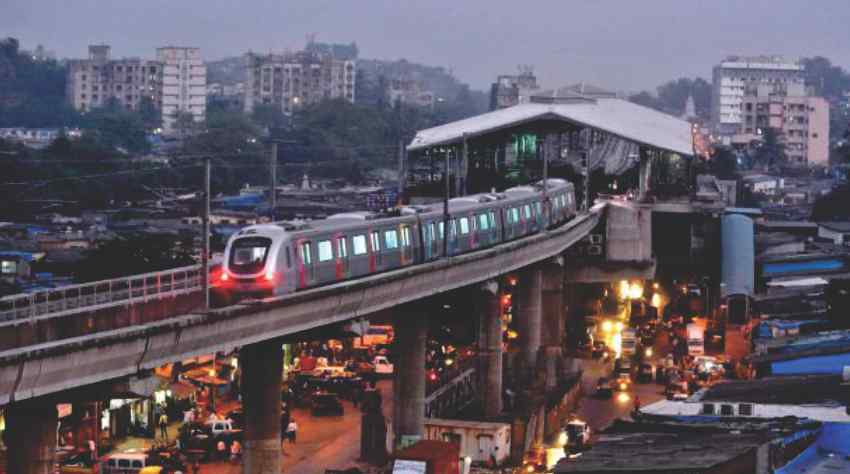Transport is an activity that facilitates goods and individuals from one place to another. Transport removes the precarious distance barrier for widely dispersed country and hence a developed transport system stands for country’s essential and sustainable developments. For India, among them Road Transport and Train Transport are the most important one’s as both of them are the pillars of the country’s overall economy.
Road Transport Developments
Road transport is the most flexible, economic and personalized way of transport. It provides door- to- door service and it is easier in terms of maintenance. As per a recent survey, India has more than 5,000,000 km of road length and 80 % of road traffic stems from the personal vehicles i.e. Bikes and Cars. India has around 1, 250 km of expressways, 71,000 km of national highways, 1, 60,000 km of state highways and around 4, 50,000 km of district or rural area roads approximately. The numbers of kilometres are increasing by 1.16 % per year. It is the second largest road network in the world after United States. However, 40% of the road traffic travels over national highway which only covers 2% of the road length.
National Highway Authority of India’s key projects are the reason behind this emerging success. The National Highway Development Project of the central government is one of them. The project stands for a progressive highway upgradation and rehabilitation. Hence, this project has credentials for uninterrupted traffic flow, providing world class roads in the country. NHDP is the largest highway project of the country which initially provided 4 to 6 lane highways to the country. This project is growing since 1998. The Special Accelerated Road Development Programme is another one to be considered. This programme provided a strong connectivity between state capital and district headquarters. The project improved national highways and express ways.
New Facilities and Announcements in Road Transport
The Centre approved 83,000 km road project worth Rs 7 lakh crore. NHAI also announced Quick Response Ambulance Stations in 50 km radius. This station will reportedly respond within 15 minutes of inquiry. Over 1.5 lakh people die per year in road accidents. However, the proper implementation of this new idea can reduce the count extensively. The Green Energy Project is also being launched; through this project the government is willing to provide CNG- run vehicles and expected to build Compressed Natural Gas (CNG) stations alongside highways. The government has also provided electric toll collection facility, FastTags which allows users to pay the toll using their smartphones. The government has allowed privatisation to enlighten the system and many of the industrial giant’s collaboration pedalling the sector towards overall development hence it is a right time for the interested investors to charge in.
Rail Transport
The Indian Railway is one of the oldest and largest railway systems in the world. It has played an integrating role in economic and socio – literal development. Increase in electrification of tracks, advancements in amenities and other internet providers of internet access have made the conventional journey modernised. The freight train is the most trusted medium for transfer of goods and has played an inevitable role in maintaining price stability and boosting economy.
Emergence of Metros and Bullet train further glorified the mode of transport. Delhi Metro was acknowledged worldwide for its efficient and reliable manufacturing. The core cities like Kolkata, Chennai, Bangalore, Gurgaon, Mumbai and Jaipur all been provided the metro connectivity and emerging cities like Pune and Ahmedabad will also benefited in the coming years. Bullet Train is an ambitious project of the government. All the developed nations around the world have high-speed rails. Since, most of the developed countries in world have high-speed rails, the Indian government is taking all right steps towards becoming a emerging power and thus further igniting the economy.
Aviation Transport
Aviation Transport is the quickest and the easiest way of transport. However, it underwent a slow growth post- liberalisation in India. Privatisation led the further progress in industry. The Indian Airlines connects 80 cities across India; some of the overseas cities are also connected through it. There are 132 classified Airports with 350 runways and over 300,000 passengers travel by air per year, with Mumbai- Delhi route is being one of the world’s busiest routes.
Water Transport
India has a coastline of 7,517 km and 14,500 km of inland waterways as well. The Indian waterways include 5,200 km of river and 485 km of canals. Tamil Nadu acts as the driving force of water transport as, it is the only city with 3 ports which carries 79 ships and 53 research and support vessels. Mumbai port and JNPT port are the economy providers of this sectors, it handles 70% of marine trades. The sector is well utilised and it has penlight opportunities for investors.
Social and Economic Benefits
The major transport mediums like Roads and Trains have played an important role in sustainable economic development.
It grows industrial infrastructure, encourages production and social compatibility as well. It widens market, and creates customers.
It even creates direct and indirect employment opportunities. The government owned transport systems have their own huge employee requirements; it results in employment in related sectorial jobs such as machine manufacturing, civil construction, vehicle driving, trade etc.
It rejuvenates small cities that create place utility. The complete development of cities creates better educational, functional facilities and it also facilitates the standard of living.
The demand and supply system of products is also stabilized as transfer of goods from the place of surplus to a place of scarcity that enables price stability and hence transforming the transport system is a significant way of transforming a city.
Read More: Click Here
Kedar Kulkarni


